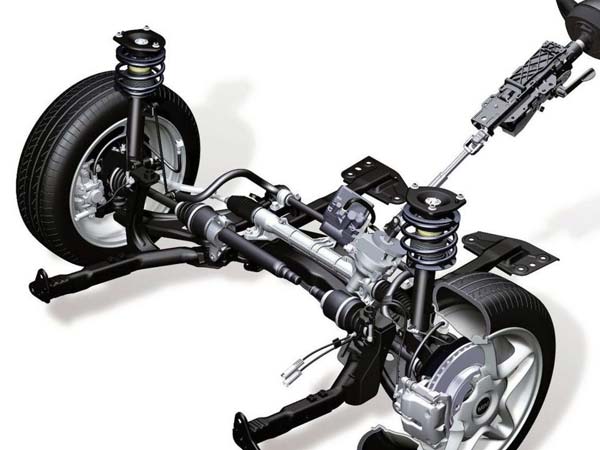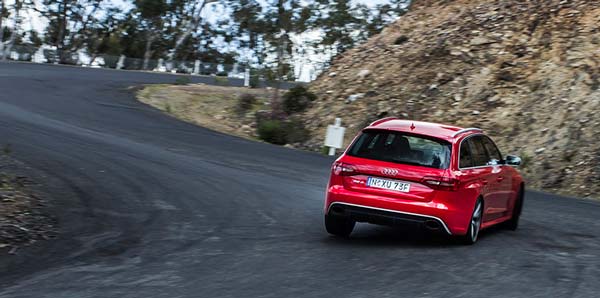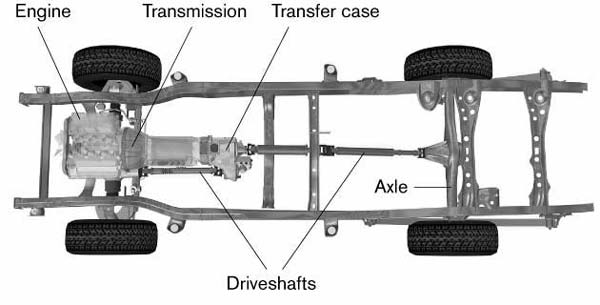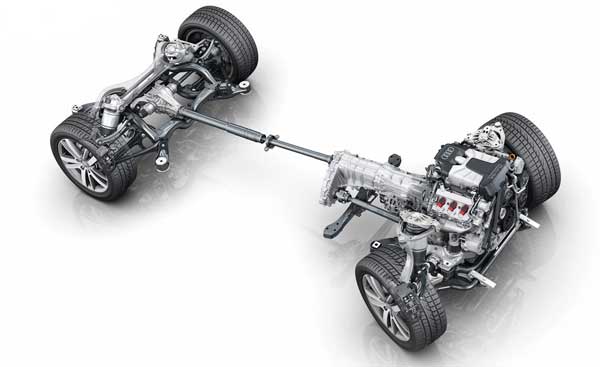Just In
- 2 hrs ago

- 3 hrs ago

- 5 hrs ago

- 5 hrs ago

Don't Miss!
- Movies
 Bade Miyan Chote Miyan OTT Release Date & Platform: When Will Akshay's Film Stream Online? Here’s What We Know
Bade Miyan Chote Miyan OTT Release Date & Platform: When Will Akshay's Film Stream Online? Here’s What We Know - Sports
 IPL 2024: LSG Young Guns Script IPL History With Match-Saving Batting Effort Against Delhi Capitals
IPL 2024: LSG Young Guns Script IPL History With Match-Saving Batting Effort Against Delhi Capitals - Education
 ETS TOEFL introduces scholarship opportunity for Indian students studying in the UK
ETS TOEFL introduces scholarship opportunity for Indian students studying in the UK - Lifestyle
 Samantha Ruth Prabhu Sizzles In Risqué Gucci Pantsuit, Check Her Boss Lady Style Statements!
Samantha Ruth Prabhu Sizzles In Risqué Gucci Pantsuit, Check Her Boss Lady Style Statements! - News
 Surya Tilak Ram Mandir: Ram Lalla To Get Tilak On Ram Navami, Surya Abhishek Trial Successful
Surya Tilak Ram Mandir: Ram Lalla To Get Tilak On Ram Navami, Surya Abhishek Trial Successful - Finance
 Rs 40/Share Dividend: FMCG Stock To Declare Dividend; Hit 52-Week High 9 Months Ago
Rs 40/Share Dividend: FMCG Stock To Declare Dividend; Hit 52-Week High 9 Months Ago - Technology
 Oppo A3 Pro Launched With 120Hz Display, IP69 Rating; Check Price and Availability
Oppo A3 Pro Launched With 120Hz Display, IP69 Rating; Check Price and Availability - Travel
 Best Indoor And Outdoor Amusement Parks In Mumbai For Kids
Best Indoor And Outdoor Amusement Parks In Mumbai For Kids
Drivetrain Systems Explained: Difference Between FWD, RWD, AWD and 4WD
We explain the differences between front wheel drive, rear wheel drive, all wheel drive and four wheel drive, to help our readers make an informed choice or to understand their car better.
A Drivetrain is a system which connects the transmission of a car to its driven axle. In simpler words, drivetrain involves all the systems and equipment which take power and torque produced by the engine, from the transmission to the driven wheels.
Early cars were all rear-wheel-driven, but as time passed, R&D methods and technology improved, because of which, more drivetrain options emerged. In this feature article, we will be telling our readers the differences between Front-Wheel-Drive (FWD), Rear-Wheel-Drive (RWD), 4-Wheel-Drive (4WD) and All-Wheel-Drive (AWD).

Rear-Wheel-Drive (RWD)
RWD on internal combustion engine-powered automobiles has been around since 1885 when Carl Benz developed the Benz Patent Motor Car, which of course is known to be the first car in the world.
RWD is a system in which, a driveshaft/propeller shaft takes the torque put out by the transmission and drives the rear wheels through a differential, which splits the drive between the two rear wheels. A RWD system requires the engine and gearbox to be longitudinally mounted so that the drive can be sent straight to the differential at the rear.

A RWD car will have the slight disadvantage of having lesser space inside the car, as the driveshaft will have to go underneath the body, which is why some cars have the bump in their floor. But RWD cars have always pleased automotive enthusiasts, as according to them, they are more 'fun' to drive. Sliding the rear-end of the car out and having fun is something that began with RWD cars.

Today, FWD cars outnumber RWD cars, but there are quite a few revered RWD cars in today's time and age as well. Most cars made by Mercedes-Benz are RWD, and most muscle cars even today are RWD, like the Ford Mustang, the Dodge Charger and Challenger, the Chevrolet Camaro, etc. In India, cars like the Mahindra Xylo, Maruti Suzuki Omni, Toyota Innova, etc. are RWD.
Front-Wheel-Drive
(FWD)
Experiments
with
FWD
cars
began
as
early
as
1895,
and
the
experimenting
went
on
over
the
next
few
decades.
The
first
production
vehicle
to
use
FWD
was
the
BSA
three-wheeler
in
1929,
yet
the
experimenting
continued,
with
many
manufacturers
taking
an
interest
in
FWD.

It took decades to develop FWD because of the complexity it involves. The front wheels have to both drive and steer the car, which is exactly what makes it complex. Though many engine configurations were tried, it was found that the engine had to be mounted transversely to get the gearbox and differential to fit in the same space.
The decades spent on developing FWD seems worth it when looked at from the 21st-century perspective. Most of the cars on the roads today are FWD. All the hatchbacks, and almost all sedans today are driven by their front wheels.

FWD is more efficient than RWD, and it also saves some space inside the car as it does not require a driveshaft under the body. However, most FWD cars have understeer as its natural character in which the front end of the car goes out when a corner is taken too fast.
Four-Wheel-Drive
(4WD):
4WD
vehicles
are
those
vehicles
with
drive
going
to
both
the
axles,
in
turn,
transferring
torque
to
four
wheel
ends.
It
is
optimized
for
off-road
driving
conditions.
4WD
vehicles
are
typically
equipped
with
a
transfer
case
which
allows
a
vehicle
to
switch
between
RWD
and
4WD
operating
modes,
either
manually
or
automatically.

The roots of 4WD systems can be traced back to 1893 when English engineer Bramah Joseph Diplock patented a Four-Wheel-Drive system and built a vehicle that displayed an ability to travel on challenging terrain. Well, the purpose of 4WD systems have stuck to the same roots ever since, as they are until this day, used to travel on tough terrain, sometimes for a purpose, and sometimes for pleasure.
4WD vehicles are also termed as Four-by-four (4×4) vehicles. It is so because the first figure in 4x4 represents the total number of wheels and the second represents the number which is powered. Alternatively, a 6×4 vehicle has six wheels, out of which only four are driven.

Today, a 4WD system can be found on most Big SUVs and pickup trucks across the world. In India, vehicles like the Mahindra Scorpio Getaway, Mahindra Thar, Toyota Fortuner, Mitsubishi Pajero, Maruti Suzuki Gypsy, etc. are examples of 4WD vehicles.
All-Wheel-Drive
(AWD):
All-Wheel-Drive
uses
the
same
basic
principles
as
4WD,
but
uses
either
FWD
or
RWD
as
its
primary
drive
in
most
situations,
sending
power
to
the
other
axle
only
if
required.
The
difference
between
AWD
and
4WD
is
basically
in
its
application.
While
4WD
is
designed
to
take
the
vehicle
off
the
road,
AWD
is
designed
to
keep
the
vehicle
on
the
road.
Quite
literally.

The application of AWD today is mostly in powerful cars, and in some soft-roaders as well if required to traverse on some rough terrain. On powerful cars, an AWD helps put the power down to the road better, and it handles better which in turn makes it faster and quicker. AWD systems can detect which wheel needs the most power at the particular moment and which wheel needs none at all. On soft-roaders, it can get the car out of a sticky situation.
AWD systems first came about a few years after the first 4WD system was developed, when in 1903 Dutch brothers Jacobus and Henrik-Jan Spyker revealed an AWD hill-climb racer named Spyker 60 H.P 4WD. Though it was at the time called 4WD, it was essentially an AWD system.

AWD systems changed the world of motorsport when Audi introduced the Audi Quattro Rally car. Since then, the world of rallying has never gone back to the RWD configuration. Today, AWD systems are used on a variety of vehicles. From the likes of the Lamborghini Aventador and Porsche 911, to the Bentley Continental GT and Audi A8, and also on some soft-roaders like the Mahindra XUV 500, and Renault Duster.
AWD systems and 4WD systems are sometimes offered as optional extras, giving the customers a choice.
Other Drivetrain systems:
Individual
Wheel
Drive
(IWD):
IWD
is
the
drivetrain
used
in
most
electric
cars,
which
are
gaining
more
popularity
as
we
are
heading
towards
an
electric
car-driven
world.
It
works
exactly
as
the
name
suggests
since
it
is
driven
by
electric
motors
which
are
placed
at
each
wheel
end,
driving
that
wheel
alone.
IWD
has
many
advantages
and
almost
no
disadvantages.

Being placed at the axle ends, all it requires is the power cables to reach the electric motors. Individual-wheel-drive also allows flexibility in the way power is sent to the wheels, and the car's management systems can detect and send power only to those wheels which have the maximum traction without the involvement of any complex mechanical bits.
H-Drive:
A
H-Drive
drivetrain
layout
is
not
very
well
known,
as
it
has
seen
only
military
use,
and
even
among
military
vehicles,
it
is
a
rare
drivetrain
system.
It
features
individual
wheel
stations
instead
of
axles.
The
gearbox
is
connected
directly
to
a
single
differential
which
splits
the
drive
into
separate
left
and
right
drives.
The left and right drives are further split by another set of differentials to the front and rear wheels. At each wheel station, there is a bevel box which drives the half-shaft out to the wheel. This system is used on some heavy off-road vehicles which use 6x6 or 8x8 configurations.

This system allows every wheel station to have individual suspension, in turn giving the tyres more traction. There is increased ground clearance as well because there is no axle and differential or even the central driveshaft.
DriveSpark
Thinks!
Going
by
the
current
happenings
in
the
Automotive
Industry,
it
does
seem
like
Individual
Wheel
Drive
is
the
way
forward.
It
is
very
obvious
that
electric
cars
are
the
future,
and
having
motors
on
the
four
wheels
of
a
car
will
make
things
very
flexible
for
the
driver,
irrespective
of
the
type
of
vehicle.

Depending on the terrain, load and also the type of vehicle, the computers aboard the cars can decide to send power to individual wheels, making the vehicle a FWD or RWD or AWD, maybe even 4WD, as and when required, all within a few moments.



 Click it and Unblock the Notifications
Click it and Unblock the Notifications
















